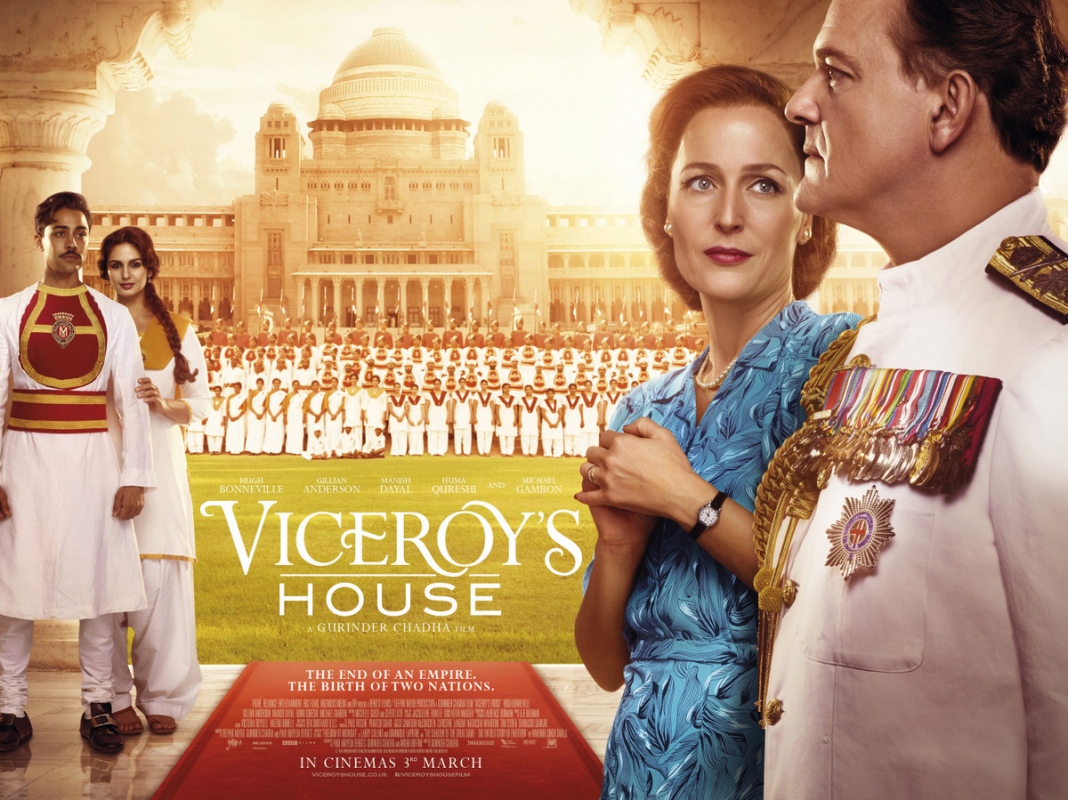As I walked in the India premiere of Gurinder Chadha’s film on Partition, I wasn’t too excited about it. I had seen the trailer and it didn’t seem very enticing. I came out drenched in emotions and satisfied.
Viceroy’s House is the India-Pakistan partition story told from the point of view of British India’s last Viceroy, Lord Louis Mountbatten’s house in Delhi. Yes, from the point of view of a house. The story is not just about how Lord Mountbatten carried out his regime in India, it’s also about his wife and daughter. It’s also about the careful affair between his attendant Jeet Kumar and Lady Edwina Mountbatten’s attendant Aalia. It’s also about other people in staff that worked in the house. And it’s also about the Partition of India, whose destiny was locked in Viceroy’s House as well, or was it? Gurinder Chadha admitted after the film’s screening that she chose to narrate the story from Viceroy’s perspective because of the budget constraints. However, I feel this may have been a blessing in disguise. For the film’s treatment makes the old partition story seem fresh and interesting.
The film begins with the preparations of Lord Mountbatten and his family’s arrival to Viceroy’s house, which is Rashtrapati Bhawan in the independent India. Jeet Kumar and Aliya, who have been in love and apart for years since the time when Jeet tended to her father in Jail, are appointed their new duties that would allow them to see each other quite often. Aalia is the reluctant one in this inter-faith romance as she is promised to a certain Aasif who has been away for years fighting for British in the 2nd World War.
The new Viceroy and his family fly into India with noble intentions. They want to hand the power to Indians as smoothly as possible. When they arrive at their new residence, they are greeted by a host of crowds on the streets and several hundred men and women in the staff of the residence. There is awe evident in Indians, there is skepticism as well and then there is miscommunication between the new masters and their servants. All of it is interesting at the very least.
At the post-screening interview, Gurinder Chadha also said that she had to use shots from other documentaries due to the budget constraints. Again, I really liked the placement of those shots. I feel they gave the story an authentic feel. She has also shot some of the iconic scenes in the film like the old documentaries. I really enjoyed these shots. They made me feel as if I was really watching Lord Mountbatten, Nehru and Jinnah.
Mountbatten family’s time in India makes for great storytelling. While Lord Mountbatten meets Nehru, Jinnah and Gandhi, Lady Mountbatten tries to understand the root problems of Indians and empathizes with them. It is the romance between Jeet and Aalia that often feels indulgent. It’s a little hard to feel for this personal conflict in the larger scheme of things, even if it’s connected to the larger conflict of the film.
But what keeps this ship sailing and even soaring are the performances of all the lead players. The empathy in Lord and Lady Mountbatten and their daughter is sincere. I have never seen a more enthusiastic Nehru in a film. Jinnah is much too outspoken for his reputation. Neeraj Kabi disappears into the skin of Gandhi, so does Gillian Anderson in Edwina Mountbatten. There is a scene where Lady Mountbatten can be seen stealing glances at the determined Nehru.
A.R. Rahman fills the tragic visuals captured by the D.O.P Ben Smithard with his heartwarming music. One shot of the film that has especially stayed with me is from the opening scene where the camera pans from Rajpath to the building we have known as the Rashtrapati Bhawan (President’s House). And then the camera tilts up to reveal the Union Jack flag. It felt like a great way of exposition.
